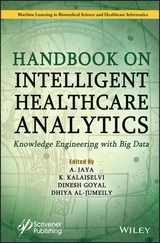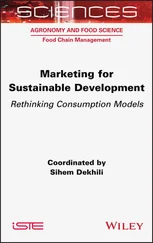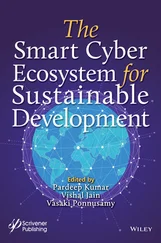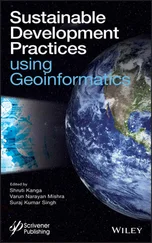6 Chapter 6 Figure 6.1 Transmission process. Figure 6.2 MANETs routing protocol. Figure 6.3 FANETs. Figure 6.4 Mobility model. Figure 6.5 Random way model. Figure 6.6 GMM model. Figure 6.7 Semi-random model. Figure 6.8 Mission model. Figure 6.9 Structure of CrANs [27]. Figure 6.10 Proposed structure of CrANS. Figure 6.11 Single hop. Figure 6.12 Multihop. Figure 6.13 Protocol operation. Figure 6.14 Positioning of sensor nodes. Figure 6.15 Mesh formation. Figure 6.16 Minimum spanning tree. Figure 6.17 Throughput vs. delivery ratio. Figure 6.18 Ideal placement of nodes. Figure 6.19 Sensor nodes with faulty points. Figure 6.20 Delay. Figure 6.21 Packet delivery ratio. Figure 6.22 Throughput. Figure 6.23 Placement of nodes. Figure 6.24 Good and bad nodes. Figure 6.25 Fitness function.
7 Chapter 7 Figure 7.1 Schematic illustration of the setup used for experiments. Figure 7.2 Comparative plot of actual and predicted value of permeate flux (%) o... Figure 7.3 Comparative residual plot of training and prediction values. Figure 7.4 Plot between residual value and number of occurrence. Figure 7.5 Plot between initial values and predicted values.Figure 7.6 Sensitivity analysis.
8 Chapter 8Figure 8.1 Distribution from NFR catalogs.Figure 8.2 The dataset definition process.Figure 8.3 SIG catalog of performance.Figure 8.4 SIG catalog of performance.Figure 8.5 The final SIG security catalog.Figure 8.6 Process of creating a classification.
9 Chapter 9Figure 9.1 Flowchart of the proposed RL algorithm.Figure 9.2 Proposed technique.Figure 9.3 NNs used after the CNNs, viz ., ResNet50 (left) and InceptionV3 (right...
10 Chapter 10Figure 10.1 Block diagram of programmable logic controller.Figure 10.2 Flow chart of programmable logic controller.Figure 10.3 Fuzzy controller architecture.Figure 10.4 Basic blocks of fuzzy logic GUI toolbox.Figure 10.5 Basic neuron structure [25].Figure 10.6 Artificial neural network’s (ANN) layers [26].Figure 10.7 ANFIS editor.Figure 10.8 P & I diagram of the case study (intermediate tank).Figure 10.9 Electromagnetic flow meter.Figure 10.10 Resistance temperature device (RTD).Figure 10.11 Current-to-pressure (I/P) converter.Figure 10.12 Process control valve.Figure 10.13 FIS editor.Figure 10.14 The membership function editor for temperature.Figure 10.15 The membership function editor for fluid flow.Figure 10.16 Membership function editor for steam valve.Figure 10.17 Rule editor.Figure 10.18 Pictorial representation of rules.Figure 10.19 Surface viewer.Figure 10.20 Loaded training data.Figure 10.21 Loaded checking data.Figure 10.22 Generation of new FIS from loaded data.Figure 10.23 ANFIS editor showing results.Figure 10.24 Modified rules.Figure 10.25 Modified rules with new tags.Figure 10.26 Rule viewer with testing data 1.Figure 10.27 Rule viewer with testing data 2.Figure 10.28 Rule viewer with testing data 3.Figure 10.29 Rule viewer with testing data 4.Figure 10.30 Rule viewer with testing data 5.Figure 10.31 Modified surface viewer.
11 Chapter 11Figure 11.1 Computers usage in modern concept of Manufacturing Industry 4.0.Figure 11.2 Computer usage in car designing and manufacturing.Figure 11.3 Optimization methods.Figure 11.4 Traditional methods and non-traditional methods of optimization.Figure 11.5 Injection molding process.Figure 11.6 Three-dimensional printing process.Figure 11.7 Arc welding process.Figure 11.8 Casting process.Figure 11.9 Machining process classification.Figure 11.10 ANN vs. human brain functioning similarities.Figure 11.11 Modular Neural Network.Figure 11.12 Structure of typical neural network 5-k-l-m-1 [1].Figure 11.13 Convoluted neural networks.Figure 11.14 Recurrent neural network.Figure 11.15 Closed-loop control systems.Figure 11.16 Radial neural structure (self-drawn).Figure 11.17 Multilayer perceptron.Figure 11.18 Kohonen self-organizing neural network.Figure 11.19 LSTM ANN structure.Figure 11.20 ANN training [55, 56].Figure 11.21 R or the correlation coefficient = 1.Figure 11.22 CNC machine.
12 Chapter 12Figure 12.1 Block diagram for training phase.Figure 12.2 Block diagram for testing phase.Figure 12.3 ASR block diagram.Figure 12.4 Data collection modes.Figure 12.5 Block diagram of system.
13 Chapter 13Figure 13.1 Extractive summarization model using graph-based approach.Figure 13.2 Architecture of GRAPHSUM model.
14 Chapter 14Figure 14.1 Twitter users’ worldwide data January 2021 [32].Figure 14.2 The Google Cloud console [6].Figure 14.3 Sentiment analysis techniques [35].Figure 14.4 Fetching of data using BigQuery [37].Figure 14.5 The architecture of Google BigQuery [38].Figure 14.6 Architectural view of the proposed system [42].Figure 14.7 Data refining using BigQuery [39].Figure 14.8 Google App Engine launcher [40].Figure 14.9 (a) and (b) Twitter for BigQuery result window [41].
15 Chapter 15Figure 15.1 Graphical model representation of LDA.Figure 15.2 Process pipeline.Figure 15.3 Work flow of the proposed system.Figure 15.4 Creation of dataset and training of data.
16 Chapter 16Figure 16.1 Four-fold plot of predicted class vs. actual class and a ROC curve f...Figure 16.2 Four-fold plot of predicted class vs. actual class and a ROC curve f...Figure 16.3 Four-fold plot of predicted class vs. actual class and an ROC curve ...Figure 16.4 Four-fold plot of predicted class vs. actual class and a ROC curve f...
17 Chapter 17Figure 17.1 Inventory management system.Figure 17.2 Behavior of cost function I with respect to inventory level.Figure 17.3 Behavior of cost function II with respect to inventory level.
18 Chapter 18Figure 18.1 Supply chain network.Figure 18.2 Mixed integer programming.Figure 18.3 Inventory in supply chain performance.Figure 18.4 Closed-loop supply chain management.Figure 18.5 Supply chain network design under uncertainty.
19 Chapter 19Figure 19.1 Architecture of the proposed ensemble model.
20 Chapter 20Figure 20.1 Type-A SPS designed using microstrip TL.Figure 20.2 Simulated result showing PD of Type-A SPS shown in Figure 20.1.Figure 20.3 Input impedance at port 1 (or 2) of the (a) Type-A SPS has shown in ...Figure 20.4 Modified Type-A SPS with single stub tuner.Figure 20.5 Fabricated PS: (a) signal plane and (b) ground plane.Figure 20.6 Simulated and measured (a) magnitude response, (b) phase response, a...Figure 20.7 Equivalent spice model of varactor diode (SMV2019).Figure 20.8 (a) SPS with single varactor diode. (b) Equivalent lumped RLGC model...Figure 20.9 SPS with (a) two varactor diodes and (b) three varactor diodes.Figure 20.10 For single varactor diode: (a) RL plot; (b) IL plot; (c) PD plot.Figure 20.11 For two varactor diodes: (a) RL plot; (b) IL plot; (c) PD plot.Figure 20.12 For three varactor diodes: (a) RL plot; (b) IL plot; (c) PD plot.
21 Chapter 21Figure 21.1 Tools used in Fuzzy logic toolbox.Figure 21.2 FIS procedure for present study.Figure 21.3 Empirical transfer function.Figure 21.4 Transfer function in fuzzy format of PC.Figure 21.5 Transfer function in fuzzy format of PPC.Figure 21.6 Transfer function in fuzzy format of QC.Figure 21.7 Transfer function in fuzzy format of MGT.Figure 21.8 Transfer function in fuzzy format of result.Figure 21.9 Fuzzy rules.Figure 21.10 Fuzzy rules.Figure 21.11 Rule viewer.Figure 21.12 Rule viewer.Figure 21.13 Transfer function in fuzzy format of result.Figure 21.14 Fuzzy rules.Figure 21.15 Rule viewer.
22 Chapter 22Figure 22.1 Inventory optimization.Figure 22.2 Multi-product inventory network.Figure 22.3 Three stage processes.
23 Chapter 23Figure 23.1 3D Euclidean space.Figure 23.2 (a) 3D model of function. (b) Gradient of function.Figure 23.3 Traveling salesman problem.Figure 23.4 Wing design parameters.Figure 23.5 (a) Convex function. (b) Non-convex function.Figure 23.6 Classification of optimization algorithms.Figure 23.7 Genetic algorithm.Figure 23.8 Torquigener albomaculosus [39].Figure 23.9 Circular structure of pufferfish and zones: (a) sideview and (b) upp...Figure 23.10 Illustration of circular structures.Figure 23.11 The modeling of circular structure.Figure 23.12 Beale function.Figure 23.13 The change of objective function value versus number of iterations.Figure 23.14 Change of circular structures for Beale function.
Читать дальше












